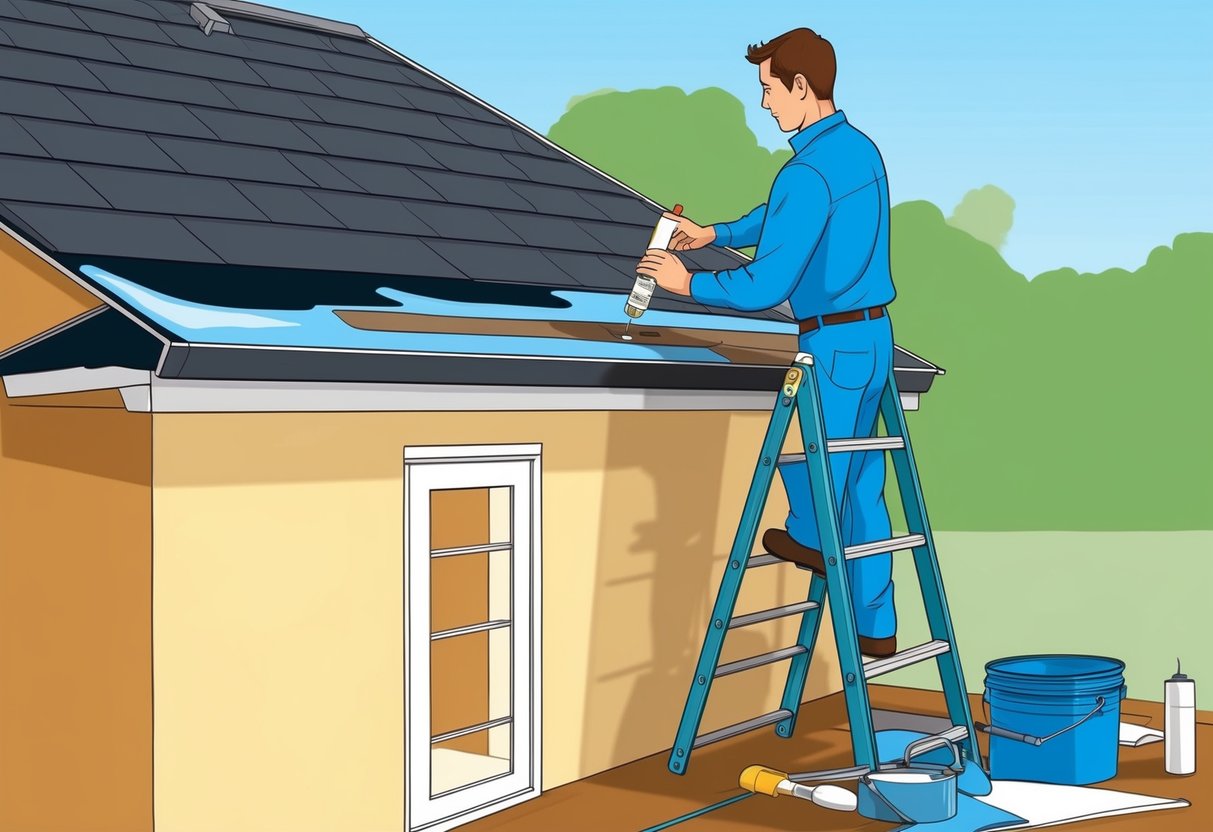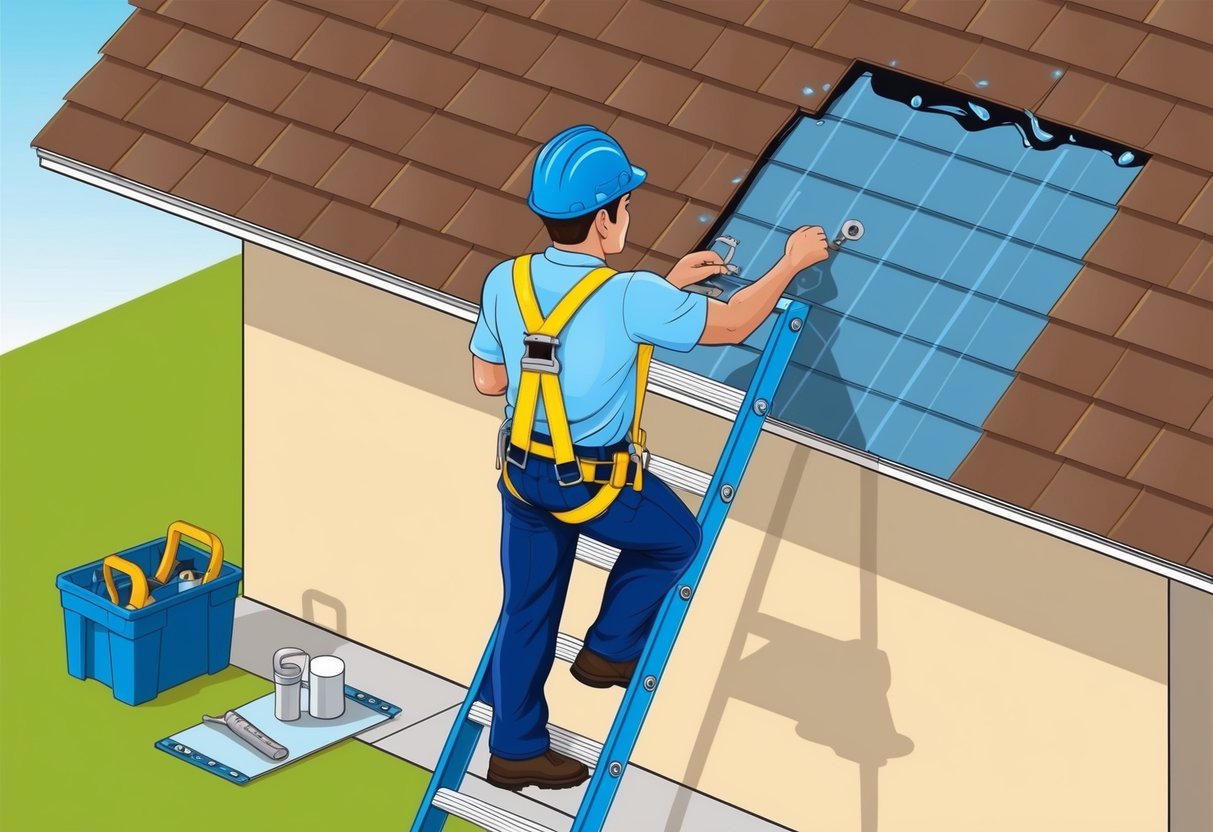
Fixing a leaky roof can seem overwhelming, but with the right guidance and practical steps, even beginners can handle common roofing repairs safely.
Addressing roof leaks quickly prevents costly water damage, mold growth, and structural issues in the home.
Recognizing the early signs of a leak, such as water stains or dampness in the attic, empowers homeowners to take immediate action before a minor issue becomes a major problem.
Many essential roof repairs—like replacing damaged shingles, resealing joints, or installing fresh step flashing—can be completed using basic tools and clear instructions.
Understanding where leaks typically occur and how to use materials like sealant and waterproof patches helps ensure a lasting fix.
Homeowners who follow a proven step-by-step repair guide can restore protection and peace of mind without having to call a contractor right away.
Tackling a leaking roof with confidence starts with knowledge about roof maintenance, safety measures, and effective DIY techniques.
The process outlined in this guide provides clear direction for beginners, helping them identify problem areas and apply reliable solutions to prevent future leaks.
Understanding the Causes of Roof Leaks
A roof leak is a problem that often starts small but can cause significant damage over time if not addressed quickly.
Homeowners face several potential sources and indications of water intrusion that can help pinpoint the root cause.
Common Sources of Water Intrusion
Many roof leaks are caused by issues in areas where different parts of the roof join together, such as valleys, chimneys, skylights, and vents.
These spots are vulnerable because flashing or seals can deteriorate, allowing moisture to enter.
Damaged or missing shingles also create direct paths for water.
High winds and storms can dislodge shingles, leaving gaps where rain can seep underneath.
Ice dams in colder climates can trap melting snow, which then backs up under shingles and causes a leak.
It’s important to inspect all roof penetrations and joint areas regularly.
Checking around gutters and downspouts is also necessary since clogged gutters can cause water to pool and find its way into the roof structure.
More information about common causes can be found at this guide to roof leaks.
Types of Roof Damage That Lead to Leaks
Different types of roof damage contribute to water leaks.
Broken, curled, or missing asphalt shingles are typical culprits.
Aging or poorly maintained roofs often develop cracks or holes as materials dry out and become brittle.
Flashing—metal strips installed around chimneys, dormers, and vent pipes—can rust, corrode, or pull away.
Once flashing fails, rain easily passes through these vulnerable points.
Skylights and solar panels can introduce leaks if the surrounding seals or caulking were not properly installed or have deteriorated over time.
Tile and metal roofs are also prone to their own forms of damage, such as broken tiles or corroded fasteners.
Regular evaluations and understanding the impact of weather and age play critical roles in avoiding roof leaks.
For a closer look at roof damage issues, review this roof repair guide.
Signs of Moisture and Water Stains
Moisture and water stains on ceilings or walls often signal a current or previous roof leak.
Stains usually appear as discolored patches—brown, yellow, or even dark rings—indicating accumulated water above the surface.
Other warning signs include peeling paint, bubbled wallpaper, or musty odors in affected rooms.
In attics, visible damp spots, mold growth, or deteriorating insulation serve as indicators that water has seeped through the roof structure.
It’s vital to investigate the attic during and after rainfall, using a flashlight to spot active drips or wet areas.
Early recognition of these signs allows homeowners to address leaks before further damage occurs.
For more information on early detection, check out these tips for finding and fixing roof leaks.
Safety Precautions Before Starting Roof Repairs

Before any roof repair begins, homeowners need to take specific precautions to avoid accidents, protect themselves from injury, and reduce potential damage.
Proper planning, the right equipment, and environmental awareness are key to performing safe and effective leak repairs on any residential roof.
Essential Safety Gear and Tools
Wearing the right safety gear is critical for anyone tackling leaky roof repairs.
Safety goggles protect eyes from flying debris and roofing dust.
Sturdy gloves shield hands from sharp shingles, nails, and tools.
A well-fitted pair of slip-resistant shoes is necessary for good grip on sloped or wet surfaces.
A harness attached to a secure anchor point is advised, especially on steeper roofs.
Helmets can prevent injury from falling objects, and durable work clothing offers added protection.
When gathering tools, it is important to have a reliable ladder, a plastic tarp for covering exposed sections, and basic hand tools, such as a pry bar and utility knife.
Keeping a first aid kit nearby ensures a fast response to minor injuries.
Working Safely on a Roof
Staying safe while working on a roof starts with inspecting the ladder.
Verify that the ladder is on stable ground and that someone is available to assist if necessary.
Always maintain three points of contact with the ladder when climbing.
Avoid stepping near the edge and distribute weight evenly when moving across the rooftop.
If repairing damaged shingles, carefully lift or remove them using a pry bar and never rush the process, since loose shingles or nails pose tripping hazards.
Keep the workspace clear of extra tools and debris by using a bucket or tool belt.
In an emergency, a cell phone should remain accessible at all times for quick communication.
Weather Considerations for Roof Repair
Roof repairs must be scheduled with weather conditions in mind.
It is safest to work on dry, clear days since rain, frost, or strong winds increase accident risk and can damage exposed roof sections further.
Wet roofs become slippery and make repairs more hazardous.
A weatherproof plastic tarp is useful for temporary protection if a sudden shower occurs.
Avoid working during extreme temperatures, as both cold and heat can affect roofing materials and personal safety.
Check the forecast regularly and reschedule the project if thunderstorms or high winds are expected.
Trusted guides recommend prioritizing safety and only working under favorable conditions, as described in this step-by-step repair guide.